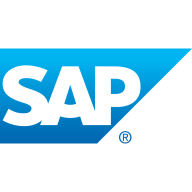


UiPath Platform and SAP Build Process Automation are competing in the automation space. UiPath appears to have the edge due to its ease of use and adaptable pricing, whereas SAP Build Process Automation shines in integration capabilities for SAP environments.
Features: UiPath Platform offers robust workflow automation, AI-driven insights, and a flexible, scalable solution. SAP Build Process Automation provides strong SAP system integration, efficient business process automation, and powerful analytics tools.
Ease of Deployment and Customer Service: UiPath Platform is known for its straightforward deployment process and favorable customer support. SAP Build Process Automation requires a more complex setup but benefits enterprises leveraging SAP structures.
Pricing and ROI: UiPath Platform features a flexible pricing model, attracting cost-sensitive buyers with its adaptable structure. SAP Build Process Automation aligns pricing with long-term benefits for SAP-centric operations, offering value through integration.
| Product | Market Share (%) |
|---|---|
| UiPath Platform | 14.2% |
| Fortra's Automate | 2.5% |
| SAP Build Process Automation | 1.2% |
| Other | 82.1% |

| Company Size | Count |
|---|---|
| Small Business | 24 |
| Midsize Enterprise | 10 |
| Large Enterprise | 7 |
| Company Size | Count |
|---|---|
| Small Business | 249 |
| Midsize Enterprise | 143 |
| Large Enterprise | 665 |
Fortra's Automate offers a user-friendly platform for task automation, featuring a drag-and-drop interface that aids in scheduling, file management, and integrating with services like Azure and AWS.
Fortra's Automate provides substantial ease in automating complex tasks through its intuitive design. It offers seamless integration capabilities, especially with Azure and AWS, and comes equipped with strong error handling. Cost-effective and requiring minimal coding, it supports a broad range of industries by effectively automating tasks such as HR operations, invoice management, and data processing across servers.
What features stand out in Fortra's Automate?
What benefits should users consider in reviews?
In industries such as healthcare and transportation, Fortra's Automate facilitates the automation of client management, HR operations, and data processing, boosting efficiency. Banks utilize it for managing extensive invoice workflows, while distribution sectors rely on its capabilities for insurance checks and system support. Its applicability across servers makes it a valuable tool for any sector seeking to reduce manual workload and improve task accuracy.
SAP Build Process Automation accelerates business process automation by offering tools for designing, executing, and monitoring workflows, enabling scalable and efficient operations.
SAP Build Process Automation is designed for optimizing business processes by automating repetitive tasks, reducing human intervention. It serves digital transformation goals by providing tools for creating, managing, and tracking workflows. This fosters an environment of efficiency and scalability, supporting companies in adapting to evolving industry demands.
What are the key features of SAP Build Process Automation?SAP Build Process Automation is implemented in several industries such as manufacturing, where it manages production workflows; finance, automating transaction processes; and healthcare, enhancing patient management efficiency. These implementations prove its versatility in meeting industry-specific challenges with tailored solutions.
UiPath Platform is appreciated for its user-friendly interface and extensive automation capabilities, offering seamless integration with diverse applications. Its intuitive drag-and-drop functionality enables users to design efficient workflows with minimal technical expertise.
UiPath Platform delivers a robust set of features that enhance automation and productivity. With components like Orchestrator, task management is optimized, facilitating better scalability. Users benefit from advanced AI and document understanding tools, boosting data handling accuracy and reducing errors. Despite its strengths, UiPath faces challenges with upgrading processes, AI enhancements, and user documentation. Integration and selector sensitivity issues, along with support and licensing complexities, highlight areas for potential improvement. Users request smoother deployment, error handling, and migration processes. Enhanced support for RHEL/Ubuntu, LINQ, and Lambda and improved real-time insights, automation recording, and scheduling are desired. Streamlining the experience for non-technical users with simplified workflows remains a priority.
What are the key features of UiPath Platform?
What benefits should users look for in reviews?
UiPath Platform is widely implemented across sectors such as finance, healthcare, insurance, HR, IT, and supply chain to automate repetitive business tasks. Common uses include automating data entry, invoice processing, document management, report generation, and customer service operations. Organizations value the platform's ability to integrate seamlessly with systems like SAP, CRM, and Oracle, allowing for enhanced efficiency and accuracy in processing both structured and unstructured data.
We monitor all Robotic Process Automation (RPA) reviews to prevent fraudulent reviews and keep review quality high. We do not post reviews by company employees or direct competitors. We validate each review for authenticity via cross-reference with LinkedIn, and personal follow-up with the reviewer when necessary.